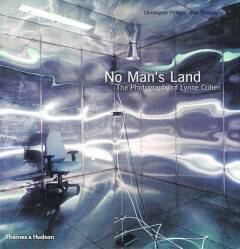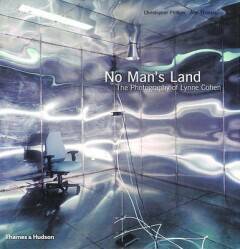
- Retrait gratuit dans votre magasin Club
- 7.000.000 titres dans notre catalogue
- Payer en toute sécurité
- Toujours un magasin près de chez vous
- Retrait gratuit dans votre magasin Club
- 7.000.0000 titres dans notre catalogue
- Payer en toute sécurité
- Toujours un magasin près de chez vous
Description
We know that human beings people these places, but they have scurried away, leaving behind nothing but desks, machines, instruments, walls, ceilings, floors, lighting--the impersonal, neutral artifacts of modern existence. An air of claustrophobia hangs over everything: there is no way in and no way out of these stifling spaces, either physically or ideologically. We need a good deal of persuading that these extraordinary environments actually exist in the real world. But they do. And for thirty years the photographer Lynne Cohen has been searching them out and recording them.
No Man's Land brings together for the first time more than 100 of the most powerful of these images in both duotone and color from the 1970s up to the present day. Cohen began as a sculptor, but in 1971 turned to photography. Her work has certain affinities with Marcel Duchamp's ready-mades in that she collects fragments of the real world photographically and turns them into found installations. Her photography should be appreciated alongside the work of her peers in the area of contemporary art and photography, such as Dieter Appelt, Andreas Gursky, Thomas Ruff, Cindy Sherman, Thomas Struth, and Jeff Wall. Cohen's photography has always been concerned with psychological, sociological, intellectual, and political artifice and her later images reveal a preoccupation with deception, manipulation, and control.
No Man's Land includes a critique of Cohen's work by Ann Thomas, Curator of the Photographs Collection at the National Gallery of Canada; an interview with the photographer; and a preface by Pierre Theberge and by William A. Ewing, author of The Body and many other internationally renowned photography books.
No Man's Land brings together for the first time more than 100 of the most powerful of these images in both duotone and color from the 1970s up to the present day. Cohen began as a sculptor, but in 1971 turned to photography. Her work has certain affinities with Marcel Duchamp's ready-mades in that she collects fragments of the real world photographically and turns them into found installations. Her photography should be appreciated alongside the work of her peers in the area of contemporary art and photography, such as Dieter Appelt, Andreas Gursky, Thomas Ruff, Cindy Sherman, Thomas Struth, and Jeff Wall. Cohen's photography has always been concerned with psychological, sociological, intellectual, and political artifice and her later images reveal a preoccupation with deception, manipulation, and control.
No Man's Land includes a critique of Cohen's work by Ann Thomas, Curator of the Photographs Collection at the National Gallery of Canada; an interview with the photographer; and a preface by Pierre Theberge and by William A. Ewing, author of The Body and many other internationally renowned photography books.
Spécifications
Parties prenantes
- Auteur(s) :
- Editeur:
Contenu
- Nombre de pages :
- 160
- Langue:
- Anglais
Caractéristiques
- EAN:
- 9780500542408
- Date de parution :
- 17-10-01
- Format:
- Livre relié
- Format numérique:
- Genaaid
- Dimensions :
- 278 mm x 287 mm
- Poids :
- 1365 g

Les avis
Nous publions uniquement les avis qui respectent les conditions requises. Consultez nos conditions pour les avis.






